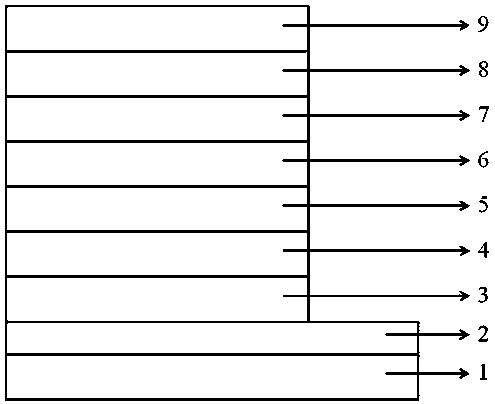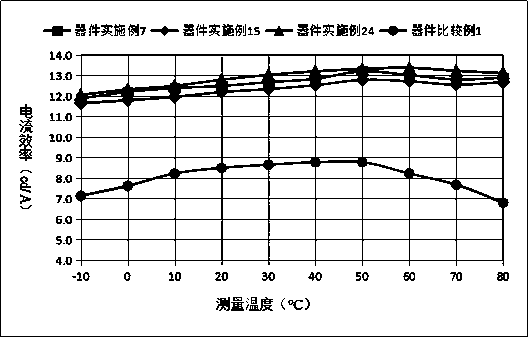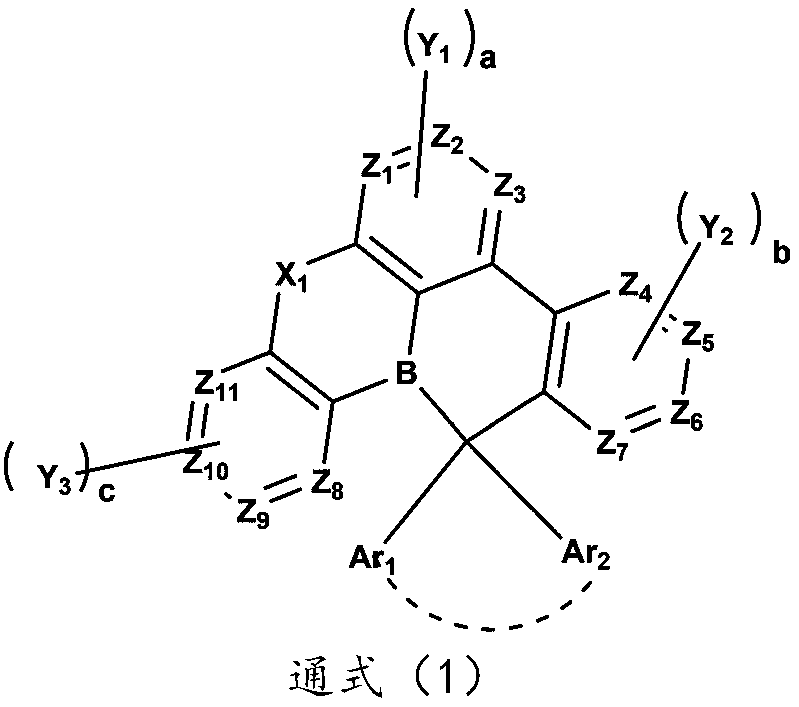Boron-containing organic electroluminescent material and application thereof in organic electroluminescent device
An electroluminescent material and luminescent technology, applied in luminescent materials, electrical solid devices, organic chemistry, etc., can solve the problems of low S1 state radiation transition rate, difficult high exciton utilization rate, high fluorescence radiation efficiency, and efficiency roll-off And other issues
- Summary
- Abstract
- Description
- Claims
- Application Information
AI Technical Summary
Problems solved by technology
Method used
Image
Examples
Embodiment 1
[0084] Example 1: Example (1-1)-Example (1-23) shows the preparation methods for preparing intermediates (1-1) to (1-23), intermediates (1-1) to ( The structure of 1-23) is as follows:
[0085]
[0086]
Embodiment (1-1
[0087] Example (1-1): Preparation of Intermediate (1-1):
[0088]
[0089] In a 250ml three-neck flask, under the protection of nitrogen, add 0.01mol 3-bromocarbazole, 0.012mol diphenylamine, 150ml toluene and stir and mix, then add 0.03mol sodium tert-butoxide, 5×10 -5 molPd(PPh 3 ) 4 , Heating to 105℃, refluxing reaction for 24 hours, sampling point plate, showing that no bromine is left, the reaction is complete; natural cooling to room temperature, filtering, filtrate under reduced pressure rotary evaporation (-0.09MPa, 85℃), passing neutral silica gel Column to obtain the target product; elemental analysis structure (molecular formula C 24 H 18 N 2 ): Theoretical value C, 86.20; H, 5.43; N, 8.38; Test value: C, 86.20; H, 5.42; N, 8.38. HPLC-MS: The molecular weight of the material is 334.15, and the measured molecular weight is 334.58.
Embodiment (1-2
[0090] Example (1-2): Preparation of Intermediate (1-2):
[0091]
[0092] In a nitrogen atmosphere, weigh out 0.01mol of 3-bromodibenzofuran, 0.015mol of bis(pinacol) diboron, 5×10 -4 molPd(dppf)Cl 2 Dissolve 0.02mol potassium acetate in 150ml 1,4-dioxane and react for 12 hours at 100°C. Sample point plates, complete the reaction, cool naturally, filter, and spin-evaporate the filtrate to obtain a crude product, which is passed through a neutral silica gel column. Get the intermediate 3-boronic acid dibenzofuran; elemental analysis structure (molecular formula C 12 H 9 BO 3 ): Theoretical value C, 67.98; H, 4.28; B, 5.10; Test value: C, 67.98; H, 4.28; B, 5.11. HPLC-MS: The molecular weight of the material is 212.06, and the measured molecular weight is 212.10.
[0093] In a 250mL three-necked flask, under the protection of nitrogen, add 0.01mol of 3-boronic acid dibenzofuran, 0.015mol of 2-nitrobromobenzene, dissolve it with a mixed solvent of toluene and ethanol (90mL of toluene...
PUM
| Property | Measurement | Unit |
|---|---|---|
| Thickness | aaaaa | aaaaa |
| Thickness | aaaaa | aaaaa |
| Thickness | aaaaa | aaaaa |
Abstract
Description
Claims
Application Information
 Login to View More
Login to View More - R&D
- Intellectual Property
- Life Sciences
- Materials
- Tech Scout
- Unparalleled Data Quality
- Higher Quality Content
- 60% Fewer Hallucinations
Browse by: Latest US Patents, China's latest patents, Technical Efficacy Thesaurus, Application Domain, Technology Topic, Popular Technical Reports.
© 2025 PatSnap. All rights reserved.Legal|Privacy policy|Modern Slavery Act Transparency Statement|Sitemap|About US| Contact US: help@patsnap.com



